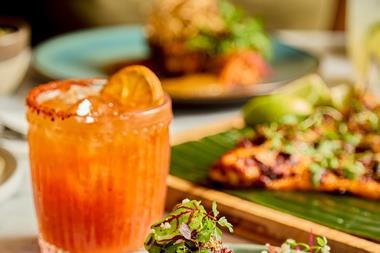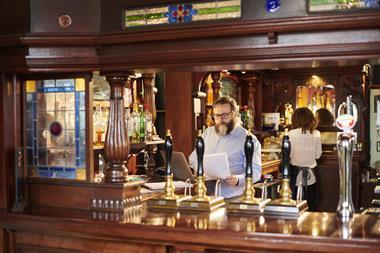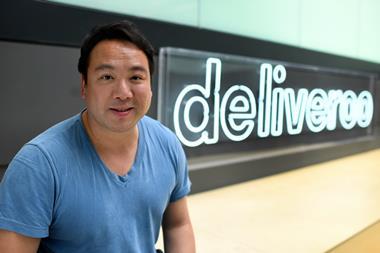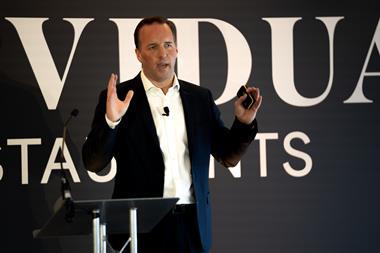Yumpingo chief executive Gary Goodman says customer data can be as transformative in our sector as it has been in retail - but it must be a force for good which enhances the guest experience rather than a disruption.
What can Amazon’s all-conquering retail business model teach the restaurant industry? Unlike retail, it’s not as easy to see how machine learning, rather than human intuition, can transform the casual dining or even fine dining experience given that personal interaction is the heart of hospitality. Looking closer however, we can realize that data via digital can evolve our industry as quickly as the evolving tastes and expectations of our consumers. In the current climate, we need more data, faster, and with the same focus as Amazon.
Love it or loathe it, it’s impossible not to be impressed by Amazon: not only transforming the way we shop in just a few short years, but also the way we live by sending shockwaves through the high street by creating a seamless e-commerce experience. Traditional bricks-and-mortar retailers have had to adapt their business models, and it’s those that have embraced digital as a seamless part of their physical stores in addition to online which are weathering the disruption best. To stay ahead of the game, restaurants must do something similar.
Data-driven performance
Amazon’s success is not limited to innovations like one-day delivery or one-click ordering. By leveraging the vast data from online activity such as purchases and searches that provide insight into our interests, likes and lifestyle, Amazon has huge collateral which builds a detailed picture of every product it sells and every customer experience it delivers. They in turn tailor the user experience to increase customer engagement and not just offer the best possible service, but constantly find ways to enhance it. This has led Amazon to have one of the highest Net Promoter Scores (NPS) of any retail brand and cement its position as the most data led, data driven and valuable retail company on the planet.
So to the question at hand, what if your restaurant group was truly data driven too? What if you could harness the power of digital technologies to create credible, insightful data about customers’ likes and dislikes to then inform decision-making? This would mean you could make more decisions faster and with complete certainty on what makes your customers happy so they tell others and come back for more. What if you could do this in such a way that customers were glad to come on that journey with you, volunteering their views in return for the knowledge that they will be put to good use to make their experience even better next time?
This need is something the C-suite across the restaurant industry are increasingly aware of. According to a recent US study , improving digital customer engagement and loyalty is now the number one priority of CIOs and CTOs, followed by improving customer analytics – overtaking the previous top concern, which was improving operational efficiency. I’d argue that those two top priorities are fundamental to the latter: the better you know your customer, the better you can serve them.
Instinct vs. knowledge
The restaurant market has had to rely on instinct due to our lack of insight into our consumers’ satisfaction with our product, our service, and their experience. We instead fascinate and manage the knowable: sales and costs. If we could secure Amazon-level digital data on how we’re doing from the consumer’s perspective, we could replace instinct with certainty and confidence over what we must do with our business, challenging assumptions and beliefs and putting new ideas to the test. After all, Amazon’s success hasn’t come from what they think they know about customers – but from what they actually know.
Jason Ridout, Chief Commercial Officer of Jamie Oliver Restaurant Group, a convert to the power of digital, hits the nail on the head: “The restaurant market is an ever-changing landscape and it’s vital as a restaurant operator to innovate to ensure you always have a competitive edge.” He adds, “There’s nothing more important than listening to customers – but without Big Data you simply don’t have that level and depth of information.”
The risk with gut feel is it is too often based on the way life has been, not the way life is going to be. 15 years ago, I tried to get House of Fraser to embrace ecommerce in my first company. At the time they were the jewel of the UK High Street. The UK’s largest department store group, the equivalent of Bloomingdales in every UK city. Their Chief Retail Officer felt “the web” would cheapen their offer. They missed the multi-channel retail model, failed to listen to their customers who were embracing new technology faster than they wanted them to. It is both a little ironic and very sad (I love that store!) that last month the group was purchased out of administration by the UK’s largest discount retailer, sportsdirect.com.
For restaurants, gut feel has had to prevail in the absence of better data but this is changing.
Mark Selby, CEO and co-founder Wahaca, an early digital pioneer, puts the case in favor for restaurants embracing digital data like Yumpingo, “Offering a digital platform truly gives customers a voice. It allows them to engage, have fun, and actually feel like they are making a difference.”
Paul Hemmings, CEO of London-based “chicken-and-waffle” restaurant chain Bird agrees. “Getting feedback digitally takes away the intimidation factor of having to give it face-to-face – it changes the dynamic completely.”
Creating a frictionless experience
I know that some people balk at the idea of integrating a digital aspect into the tangible “real-world” environment of a restaurant, but thats an old idea which fails to recognize technology having become an enabler of experiences rather than being the experience itself. The key to implementing data intelligence in our industry is that any digital engagement must be frictionless and unobtrusive. It must add to the guest experience, not detract from it. Mark Selby makes the point, “Restaurants are all about great service so for all its benefits, you don’t want digital getting in the way.”
That’s why most current “pay at table” digital payment solutions have been so slow to gain any real traction – because they require customers to download an app first, delaying the payment process or requiring the consumer work too hard.
That’s also why we keep our interactive guest reviews to a few simple clicks on the check presenter, which takes less than a minute so that guests provide genuine, immediate feedback at the touch of a button because they want to.
Giving customers what they want
Duncan Garood, CEO of Bills, another restaurant business working at the vanguard of digital, is ambitious as well as pragmatic about what can be achieved. “Every innovation you make in hospitality has to be based around what the customer expects and what they want. Then you can build in some aspiration in innovation that they didn’t perhaps expect, to surprise and delight them,” he says.
For restaurants, a data driven business requires a subtlety absent from many other industries because heart is at the core of hospitality. That sensitive approach Is achievable and perhaps even enhances the power of data to transform restaurant brands which embrace it.
If there’s anything that restaurants can learn from Amazon, it’s that customer engagement is going to be transformed by digital innovation, underpinned by seamless connectivity, data driven operations and an open and transparent conversation with the silent majority that have always had an important opinion, just no easy way to voice it constructively – until now.
Gary Goodman is chief executive of restaurant intelligence platform Yumpingo




































